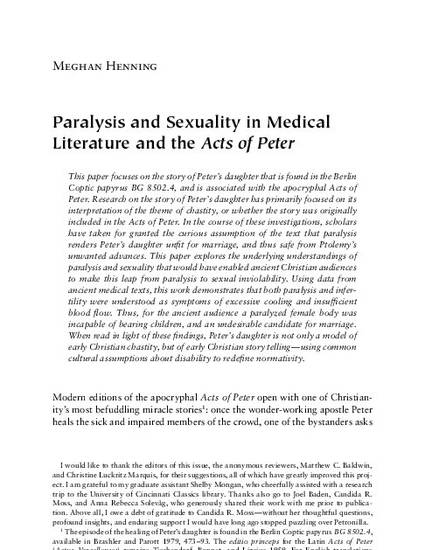
This paper focuses on the story of Peter’s daughter that is found in the Berlin Coptic papyrus BG 8502.4 and is associated with the apocryphal Acts of Peter. Research on the story of Peter’s daughter has primarily focused on its interpretation of the theme of chastity, or whether the story was originally included in the Acts of Peter. In the course of these investigations, scholars have taken for granted the curious assumption of the text that paralysis renders Peter’s daughter unfit for marriage, and thus safe from Ptolemy’s unwanted advances.
This paper explores the underlying understandings of paralysis and sexuality that would have enabled ancient Christian audiences to make this leap from paralysis to sexual inviolability. Using data from ancient medical texts, this work demonstrates that both paralysis and infertility were understood as symptoms of excessive cooling and insufficient blood flow. Thus, for the ancient audience a paralyzed female body was incapable of bearing children and an undesirable candidate for marriage.
When read in light of these findings, Peter’s daughter is not only a model of early Christian chastity, but of early Christian story telling—using common cultural assumptions about disability to redefine normativity.
Available at: http://works.bepress.com/meghan-henning/2/

Document is made available for download in compliance with publisher policies on self-archiving.
Permission documentation is on file.